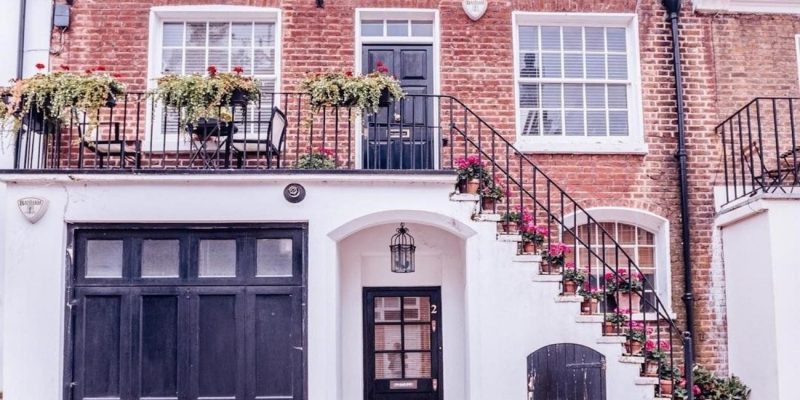As independent, whole-of-market brokers, Revolution is often asked about HMO insurance and which products we would recommend to accompany a new HMO mortgage.
Today we’ll explain how HMO property insurance works and why it’s worth having if you’re thinking of investing in a new HMO portfolio property.
HMO Property Insurance Explained
HMO insurance works like any other, except that it’s tailored to houses of multiple occupancy – or HMOs.
The idea is that the landlord protects themselves from the risks associated with a house share, including things like loss of rent, theft, fire and weather damage.
It’s also ideal for new HMO mortgages since you have coverage against issues such as unpaid rent, which can cause significant problems in keeping up with your mortgage payments.
Note that landlords aren’t legally obliged to have HMO landlord insurance, but many mortgage lenders will require this as a compulsory condition to qualify for an HMO mortgage.
Why HMO Mortgage Lenders Require HMO Insurance
If you’re new to HMO mortgages and have been surprised at this lender requirement, it’s important to understand why insurance coverage may be a big deal to your lender.
Any buy to let mortgage property has inherent risks, but in an HMO, a lender may consider the exposure too high for them to be confident you’ll be able to maintain your mortgage payments if anything goes wrong.
For example, in one buy to let property, a tenant might stop paying rent, and you’d need to either pursue that through the normal channels or claim on any insurance coverage in place.
In an HMO, the risk is greater because the mortgage cost on a large house share property is likely to be more substantial. Therefore, if your tenants fall behind with the rent, you could, in the worst-case scenario, end up in a repossession situation if you don’t have other reserves available to cover the costs.
No lender wants to make a repossession since this takes a lot of time and money and inevitably means they’ll make a loss selling the property in a liquidation sale.
Hence, an HMO mortgage lender may require suitable insurance before they’ll consider your application.
Choosing the Right Insurance Before Applying for an HMO Mortgage
There are thousands of insurance products on the market, and although HMO cover isn’t as widely available as other more conventional products, there are many choices.
The best way to select the most suitable insurance is to consider what risks you want to protect against.
It can also be helpful to consult Revolution Brokers before proceeding, as we can verify your preferred lender’s insurance minimums or requirements before you go ahead.
Below we’ll run through some of the coverage elements and what they safeguard against.
HMO Insurance Contents Cover
Landlord insurance usually covers contents, provided you specify this when you purchase your policy. That covers things like:
- Furniture
- Appliances
- Furnishings
Usually, the cover extends to theft, fire and flood, but won’t cover your tenant’s private possessions – they’ll need their own insurance against higher value items.
Buildings Insurance for HMO Investments
Buildings insurance is usually a prerequisite for any buy to let mortgage and covers repairing or rebuilding a property if it becomes damaged.
Mortgage lenders will always want to see this safeguard since it means the borrower has a way to cover the costs of repairing any structural damage and won’t fall behind with their repayments.
Insurance for Loss of HMO Rental Income
Late rental payments, or loss of rent, can be a big challenge and leave a landlord in a tricky position where they have no income to cover their HMO mortgage costs.
Insurances vary. Some will cover lost rent if a tenant elects to move out following a crisis, such as a fire or a flood.
Loss of rent HMO cover isn’t a default option, so you usually need to add this as an additional layer of protection when taking out your HMO insurance.
HMO Insurance for Fire and Water Damage
Landlord’s buildings insurance often includes cover for repairing buildings damaged by fire and water, although it might depend on how the disaster occurred.
For example, water damage caused by a burst pipe is usually covered, but ongoing damage caused by poor pipework or a dripping tap that hasn’t been repaired often won’t be.
Insuring Against Tenant Damage in an HMO
One of the options is to add accidental damage to your policy, which means if a tenant causes damage such as spilling something on the carpet, the insurance will cover the cost of like-for-like replacements.
Please note that tenant damage insurance usually covers accidents but won’t automatically apply to intentional damage situations.
How to Apply for HMO Mortgage Insurance
Insurance can be hugely helpful if you end up in a situation whereby your HMO investment stops returning a profit, yet the mortgage remains payable.
These policies normally cover any financial impacts of managing your property and ensure your HMO mortgage lender is assured you won’t fall behind with your mortgage payments.
Please contact Revolution Brokers on 0330 304 3040 or email us at info@revolutionbrokers.co.uk for tailored advice on the right HMO mortgage and insurance coverage for you.














Comments